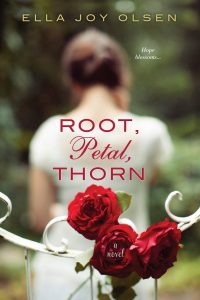Look Away. You Don’t Want to See This.
 He narrowed his eyes…with downcast eyes…her eyes darted to the window…she found him with her eyes…her eyes glistened with unshed tears…he blinked in surprise…she stared in amazement…he focused on the ground. Do you see the theme?
He narrowed his eyes…with downcast eyes…her eyes darted to the window…she found him with her eyes…her eyes glistened with unshed tears…he blinked in surprise…she stared in amazement…he focused on the ground. Do you see the theme?
These phrases are only a handful of the many I found in the rough draft of my work in progress. They are an example of a little writing crutch I (too) liberally employ. In my first attempt at any story, ALL (and I’m using the word all quite literally) character emotion is conveyed through the eyes.
When I speed-type a scene and bring it out of my head and onto the screen, eyes are my fallback, my go-to, as I try to “show not tell” a character’s emotion. I know strong, polished writing calls for a variety of descriptive words. Emotion should be portrayed by dialogue, setting, or body language. I’m aware emotion-via-eyes is like a spice – a couple of pinches will improve a meal. Too much, and it’s all you taste. But do I still over-season? Guilty as charged.
Here’s the worst part: If I read the manuscript without actively searching for this crutch, I don’t catch the preponderance. I don’t “see” my own mistake because each sentence taken on its own is solid. That’s where the FIND function in Microsoft Word is critical for me. A couple of drafts in, I make a habit of searching for words like eyes, looked, stared, glance, blinked, focus. The results are shame-worthy. Three hundred uses of the word eye. I know…and I didn’t even blink. Four hundred times a character looks – either like they are in an emotional twist, or for a missing shoe, or for an address, or for a life.
After I tally the discouraging results and finish moaning about my lack of creativity, I go through the document searching for each oft-repeated word, one at a time. Most times I am able to replace the word with an appropriate action or witty dialogue to portray the same emotion. Sometimes the fix is obvious and other times I must rewrite or revise several complicated paragraphs to make things work.
When I’m in a serious bind or in need of additional inspiration, I consult The Emotion Thesaurus: A Writer’s Guide To Character Expression, by Angela Ackerman and Becca Puglisi. If you don’t have a copy of this amazing resource at your fingertips, or right next to your computer, I suggest you race to your local bookstore (or online retailer) and get yourself one. In this guide, the authors expand upon how a person would express more than 75 emotions (I didn’t even realize a person could feel so many things). But, you see, emotions are nuanced based on the action in the scene, the previous conflict, or the personality of the character. The authors of The Emotion Thesaurus have blessedly taken these things into consideration.
 Here’s how to use this resource. First, you review your scene to identify the root emotion. I ask myself a variation of this question: “Why is my character staring at his hands?” Most of the time I land on something obvious like he’s angry or sad, and that’s when I open the thesaurus. I flip the pages, looking at the headers, the buffet of emotional options, and find the emotion that most closely matches what I’m trying to portray. He’s not angry, he’s irritated. She’s not sad, she’s remorseful. Below the definition you are presented with a smorgasbord of ways to portray said emotion.
Here’s how to use this resource. First, you review your scene to identify the root emotion. I ask myself a variation of this question: “Why is my character staring at his hands?” Most of the time I land on something obvious like he’s angry or sad, and that’s when I open the thesaurus. I flip the pages, looking at the headers, the buffet of emotional options, and find the emotion that most closely matches what I’m trying to portray. He’s not angry, he’s irritated. She’s not sad, she’s remorseful. Below the definition you are presented with a smorgasbord of ways to portray said emotion.
For one example, let’s say your character is hopeful. You are presented with dozens of physical signals of hopefulness, such as “nodding along as another speaks,” to internal sensations like “a flutter in the belly,” to mental responses like “believing everything will be alright,” to cues of acute or long-term hope like “quivering breath,” and cues of suppressed hope such as “locking hands together to force stillness.”
Good, right? Given my propensity to use the eyes to portray an emotion, on first pass I would have written something banal like: She looked at him, her eyes blinking hopefully. Ugh.
Another issue I have, and must root out, is that I often use an indirect approach to action. An example: “She started to walk toward the house.” Why not just walk toward the house? It’s almost like I’m hesitant to put my characters into the scene in an expedient manner. Or, “He thought about joining her for lunch.” Again, I use the FIND function to discover the embarrassingly numerous times my characters start doing something, or think about doing something, and I replace those instances with direct action.
One last crutch word to look for: I’ll mention it briefly because many already know about the redundancy of the word that. Does that mean I never use it? No. I must search for it, and nine times out of ten, I am able to take it out. That, my fellow writers, is satisfying.
What are your crutch words? If you don’t know, read a few pages of your manuscript. If you see several repeats, FIND them in your document. You’ll realize you aren’t perfect (because no one is), and your story will be all the better for it.
—
Ella Joy Olsen was born, raised, and currently resides in Salt Lake City, Utah – a charming town tucked against the massive Rocky Mountains. Most at home in the world of the written word, Ella spent nearly a decade on the Board of Directors for the Salt Lake City Public Library System (and four decades browsing the stacks). She is the mom of three kids ranging from pre-teen to edge-of-the-nest teen, the mama of two dogs, and the wife of one patient husband.
Though she’s crazy about words, Ella is also practical, so she graduated from the University of Utah with a degree in Finance. After years spent typing boring stuff, Ella eagerly gave up her corner cubicle and started writing fiction. She has also lived in Seattle, Washington & Savannah, Georgia.
She is a member of Tall Poppy Writers and Women’s Fiction Writers Association.
ROOT, PETAL, THORN (September 2016/Kensington) is her debut novel. And coming in September 2017 – WHERE THE SWEET BIRD SINGS.
Visit Ella Joy Olsen online: ellajoyolsen.com
Twitter: @ellajoyolsen
Category: Contemporary Women Writers, How To and Tips
Comments (10)
Trackback URL | Comments RSS Feed
Sites That Link to this Post
- Q&A with Ella Joy Olsen : Women Writers, Women's Books | September 14, 2016































This is great. I wrote a similar blog about over-using ‘look’. I forgotten I wrote it – dug it up. http://www.wwdurantstory.com/blog/it-seems-i-over-looked-words-while-editing
Thanks for reminding me. I also tend to go to the eyes to convey emotion.
I love your post! It “looks” like we have the same crutch!
I do this with my crutch words and then I SIGH and TAKE A DEEP BREATH. ha ha. The problem is when we dig up ways to replace them, we start going off the deep end. Half of the breathing/looking can stay there unchanged, because some of the replacements I’ve seen pull me out of the story because the author is trying too hard.
that said…I absolutely have those ugly moments when I find all those looks and breaths! We want visceral and it’s ‘painful’ to perfect!
The Emotion Thesaurus is a treasure!
Ella, I use the Emotion Thesaurus, too. I bought it when I realized my characters do a lot of sighing and heavy breathing (and there’s not even sex in the story!). 🙂 It’s invaluable!
Sigh…
I just recently reread a novella I quickly self published for a friend. And I wanted to climb under a rock and reverse the publication process. My characters do a lot of breathing. They sighed a lot. Their breathing grew rapid or uneven when excited. It’s definately my crutch. The entire series of those thesauruses is on my hope to have soon list!
I enjoyed your article and look forward to trying to use the advice!
I know! I had to rest my head against the desk in shame for several moments when I first used the “find word” function. Then I got to work…it took days. Good luck in your writing endeavors!
Ella
Ella, I loved reading this. Your story is the story of SO MANY writers, which is why we wrote this book. 🙂 Emition is a tough one to render onto the page sometimes, and we all get into a trap of reusing the same ways to describe. I am so very glad to hear these lists have helped!
Happy writing and crutch busting!
Angela 🙂
Thank you, Angela, for an invaluable resource!